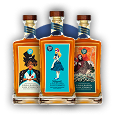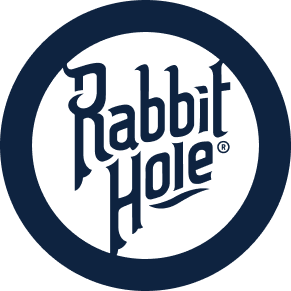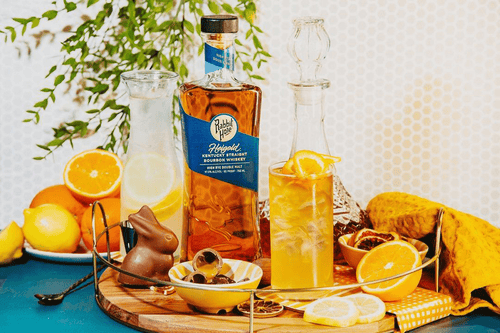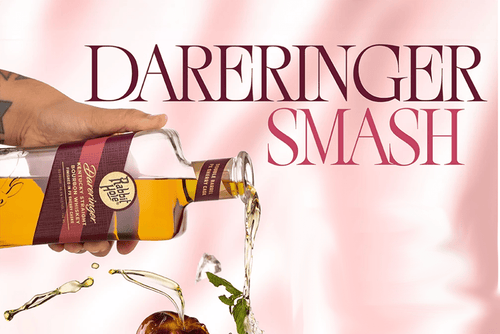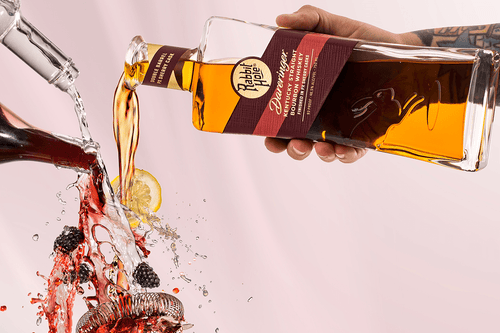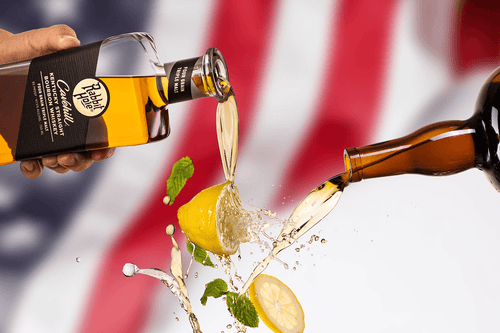How Is Gin Made
HOW GIN IS MADE
There are three basic ways to approach gin distillation — steeping, vapor infusion, and vacuum distillation, also known as cold distillation. It's the simplicity of the steeping approach that lends itself to an easy do-it-yourself way of making gin at home...

Mixed drink and cocktail trends come and go. In recent years, the popularity of gin has returned. Gin is in vogue. But exactly how is gin made? Before we dive into the how, we should also revisit the ingredients of gin, what gin tastes of, and which laws govern global commercial gin production.
Homemade Gin With Your Designed Custom Taste
DIY is probably the most exciting aspect of how gin is made. Simply using steeped infusion with an already prepared natural spirit, like vodka, anyone might experiment with various ingredients and amounts to create their own designer-taste gin from the comfort of their own home. We'll take a look at the DIY aspect later in the article.
Compared to other spirits like rum, whiskey, vodka, or cognac, the DIY aspect of gin offers a huge advantage because the DIY aspect of those other spirits is not so easily accomplished at home. It was probably the DIY gin advantage — where the only governance was taste buds — that played a large part in the explosive growth of gin popularity in the United Kingdom in the 1600s.
On the other hand, commercial gin produced for resale has to abide by certain rules that govern production, including the ingredients used and the taste to be legally labeled as gin. But to begin with, let's take a look at the core ingredients used to make gin.
How Do Gin Ingredients Compare to Vodka Ingredients?
Gin is basically made from three ingredients: neutral spirits (ethanol, distilled from fermented organics such as rye, wheat, barley, potato, grapes, corn), juniper, and a variety of other infused herbs, botanicals, and spices. However, the one consistent flavor and scent present for all gin brands and types of gin is juniper.
Juniper has a subtle, piney scent. The legal labeling of gin requires that juniper be the predominant flavor and the predominant scent. Some other common botanicals used to make gin include rosemary, coriander, orange, lemon, angelica root, cinnamon, cassia, cardamom, ginger, nutmeg, and ground almonds.
Gin is the ethanol produced by the distillation of a fermented mash of grain, potato, or corn in the same way that vodka (ethanol) is produced. After filtering away sediment, water is added to establish the right level of alcohol by volume (ABV), where the basic makeup of gin is 50% ethanol, 49% water, and 1% other things.
Gin has a legally required minimum percentage of ABV. The global minimum is 37.5%. For the United States, the minimum gin ABV is 40%. Other than sales-directed and perceived market segments, most other drinks aren't constrained by ABV requirements.
So, essentially there's no difference between gin ethanol and vodka ethanol, but the primary differentiator between gin and vodka is the essential infusion of juniper berries, which is needed to create gin. This ethanol comparison shows why an ordinary bottle of vodka may be used for the DIY steeping process of gin at home.
One more note of interest is that aside from gin infusion ingredients, if the taste and scent of gin isn't primarily juniper, then again, legally, it can't be labeled as gin.
How Is Gin Made?
Gin distillers use three methods to purify their ethanol and infuse their botanicals to craft gin.
- Steeping
In this approach, the ethanol and botanicals are mixed in a still over a heat source. Depending on the flavor profile desired, the distillers may remove the botanicals promptly or allow them to steep for as much as 48 hours.
- Vapor Infusion
A Carter head still, a modified still with a hanging basket, is used for this technique. The botanicals hang over the surface of the heated ethanol in the basket, and as the vapors rise, the botanicals release their essential oils and the condensed ethanol retains the botanical flavors.
- Vacuum Distillation
This technique requires a low-pressure vacuum environment. The reduced pressure lowers the boiling point of ethanol and the proponents of this technique claim that without extreme heat, the botanical flavors remain more intact. Some distillers combine steeping and vapor infusion, blending the two produced gins together for a compound gin product.
A common ground for these different techniques is the chosen organics, perhaps rye or barley. The prepared grains are mashed up with yeast and water, and the mash is left to ferment. As the organics break down, fermentation produces ethanol. Sediments are filtered out, and then the stills are used to boil the ethanol and condense it into another container.
For the next step, the natural spirits are re-distilled to add in the botanicals. And for this, either of the three options above is available.
The first option lets the botanicals steep in the ethanol base before re-distillation. Option two places the botanicals in a basket above the surface, and when heated spirit vapors pick up the flavors, they retain them until condensed back to liquid again. The third option uses a low-pressure environment to lower the boiling point of ethanol, thereby better preserving the botanicals' freshness.
Production costs of complex distillation methods are expensive. Cheap gin is often made by simply adding botanical extracts to a neutral spirit to avoid production expenses.
Types of Gin
Gin production laws are unique compared to other spirits. However, distillation options and a wide variety of infused ingredients make possible almost endless variations, yet commercial gins mostly fit these four categories:
- London dry: Originated in England, it usually has a strong juniper presence.
- Plymouth: One single distiller in Plymouth — a town on England's south coast — creates Plymouth gin. Compared to London dry, Plymouth is mellow with less juniper strength. Domestic Plymouth gin has an ABV of 41.2%, while worldwide distribution has an ABV of 47%. One variety of Plymouth gin is known as "Navy Strength" with an ABV of 57%.
- Old Tom: An older style gin with a distinct citrusy sweetness. Old Tom is always sweeter than London dry and Plymouth styles. It is sometimes aged in casks or barrels.
- Genever: This gin dates back to the 16th century in the Netherlands. Genever is richer than gin and has an earthy, malty flavor. It is made from malt wine spirits instead of neutral grain spirits.
Whatever your taste preference, chances are a suitable brand awaits your discovery. If not, there's always your DIY custom design approach to perfect your personal gin delight.
Want to try a unique and refreshing take on the classic gin fizz cocktail? Try this one out using Bespoke Gin by Rabbit Hole Distillery!














